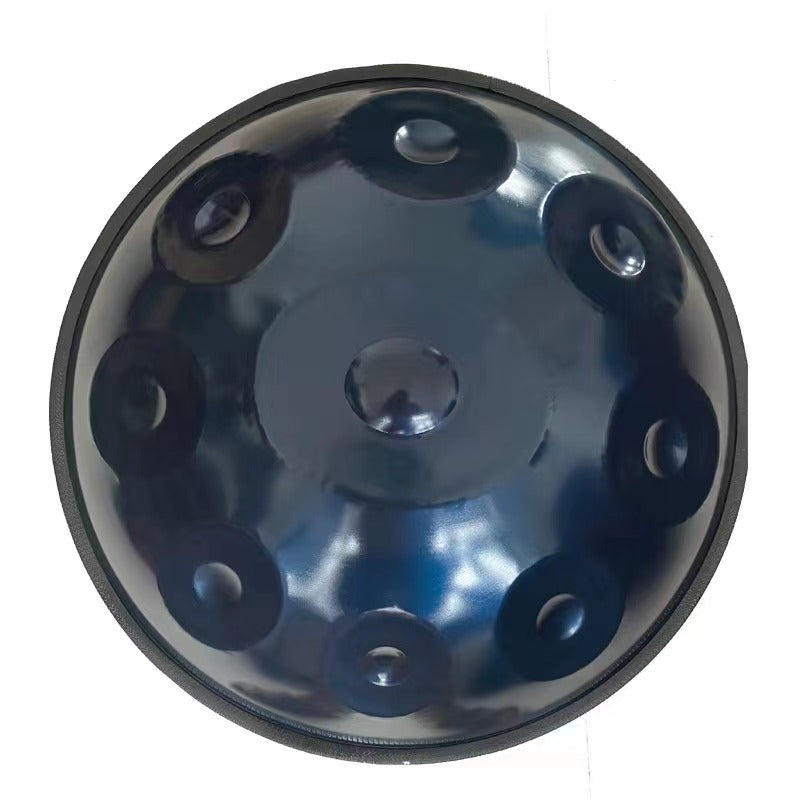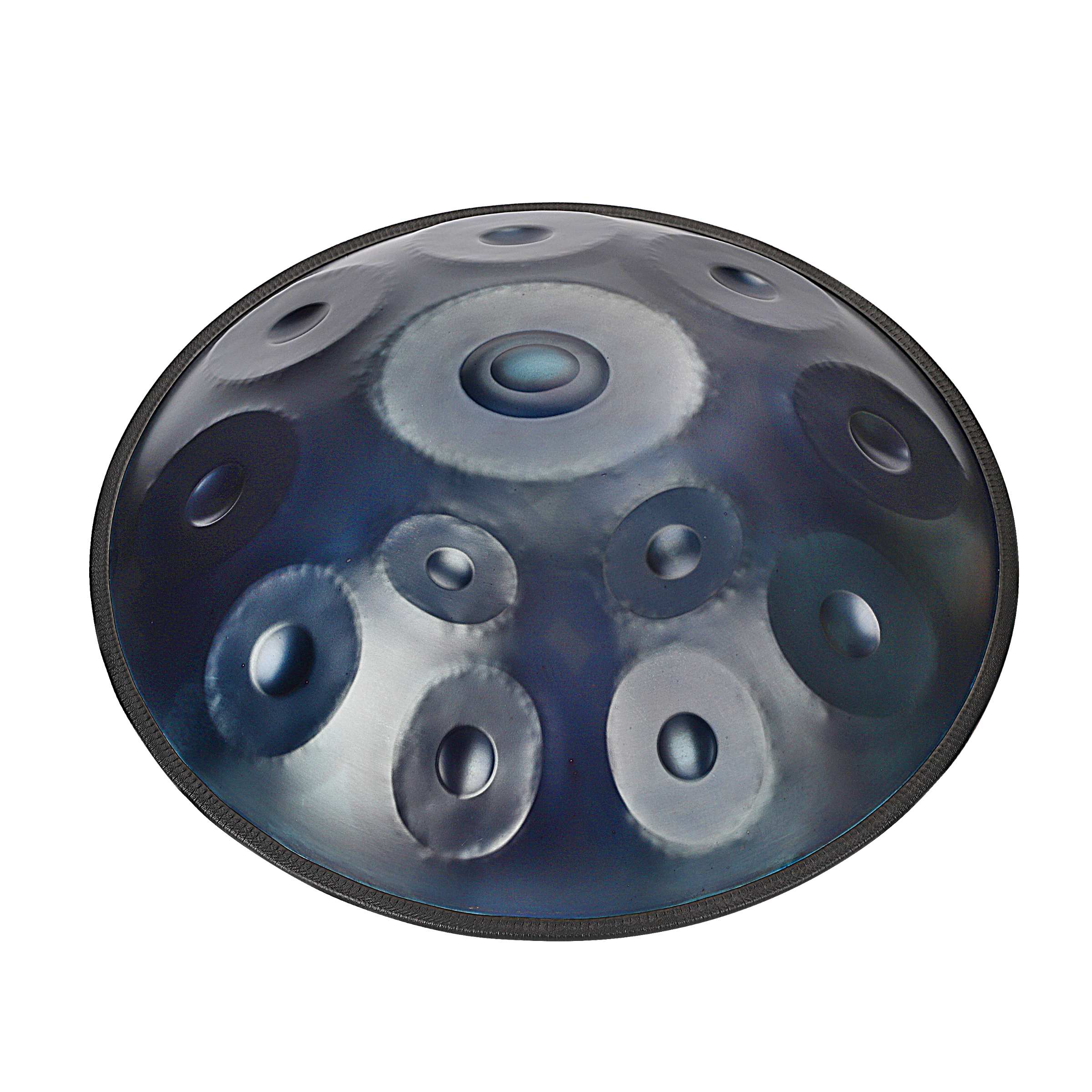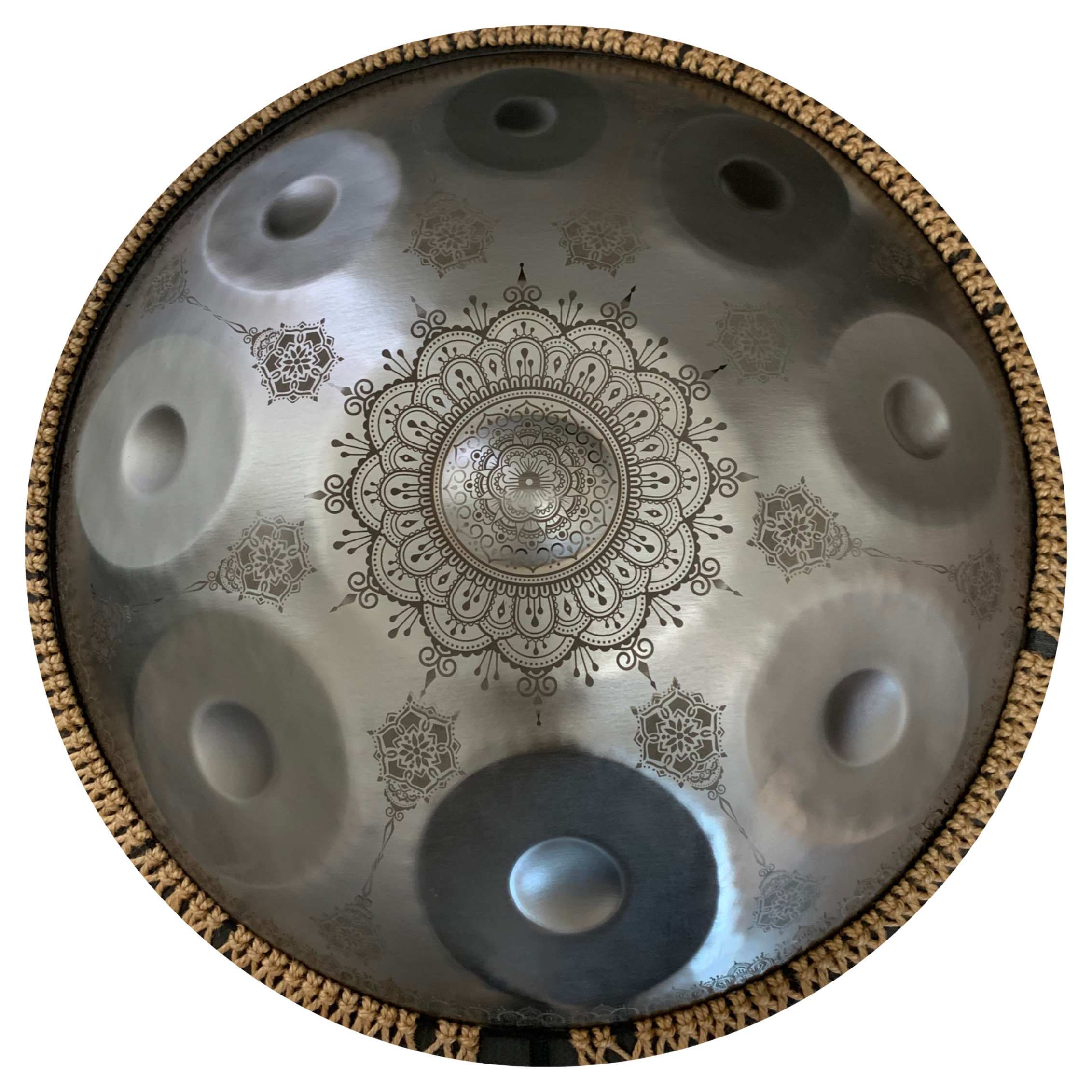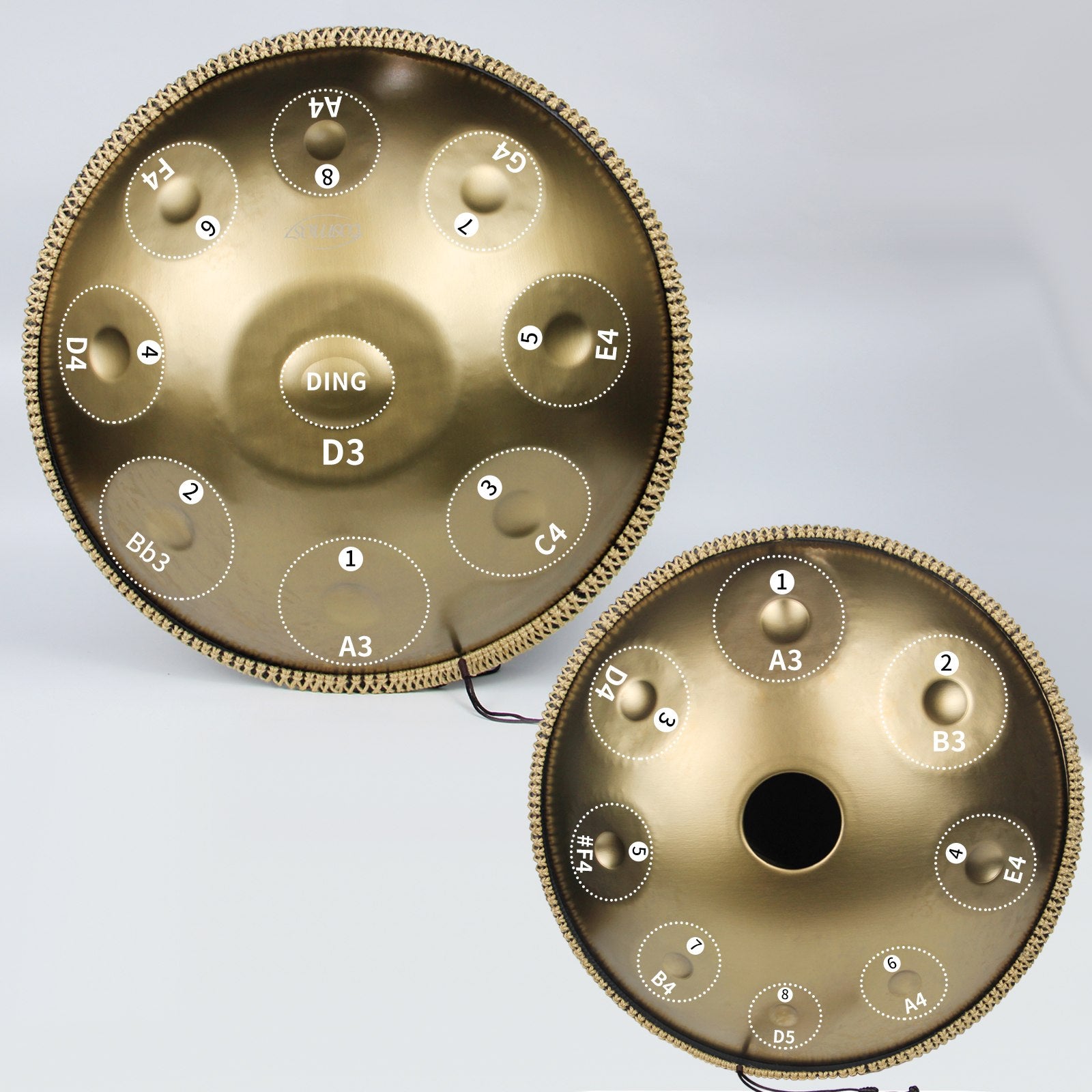Dimensions générales :
La taille standard d'un
handpan est généralement d'environ 22 pouces (56 centimètres) de diamètre. Cette mesure englobe l'ensemble de l'instrument, d'un côté à l'autre, y compris la cavité résonnante, la disposition des notes et le bord extérieur. Le diamètre de 22 pouces est une référence courante, mais des variations existent, et certains handpans peuvent être légèrement plus petits ou plus grands.
Profondeur et hauteur :
La profondeur, ou la hauteur, du handpan est une dimension essentielle qui influence sa qualité tonale globale. En général, les handpans ont une profondeur allant de 8 à 10 pouces (20 à 25 centimètres). Cette profondeur contribue à la résonance de l'instrument et à la profondeur des notes produites.
Poids:
Les handpans sont conçus pour être portables et faciles à manipuler. Le poids d'un handpan standard se situe généralement entre 10 et 20 livres (4,5 à 9 kilogrammes). Ce poids rend l'instrument confortablement portable pour les musiciens, leur permettant de le transporter facilement pour des performances ou des séances de pratique.
Diamètre de la surface de jeu :
La surface de jeu, où se trouvent les notes individuelles, a généralement un diamètre légèrement inférieur à la taille globale du handpan. Le diamètre standard de la surface de jeu est d'environ 20 pouces (51 centimètres). Cette dimension détermine l'espacement et l'agencement des notes, influençant la jouabilité et l'ergonomie de l'instrument.
Nombre de notes :
La configuration standard du handpan comprend souvent de huit à douze notes disposées en un motif circulaire sur la surface de jeu. Chaque note est soigneusement accordée à une hauteur spécifique, contribuant au son unique de l'instrument. L'agencement et l'accord de ces notes jouent un rôle crucial dans la définition de la palette tonale du handpan.







